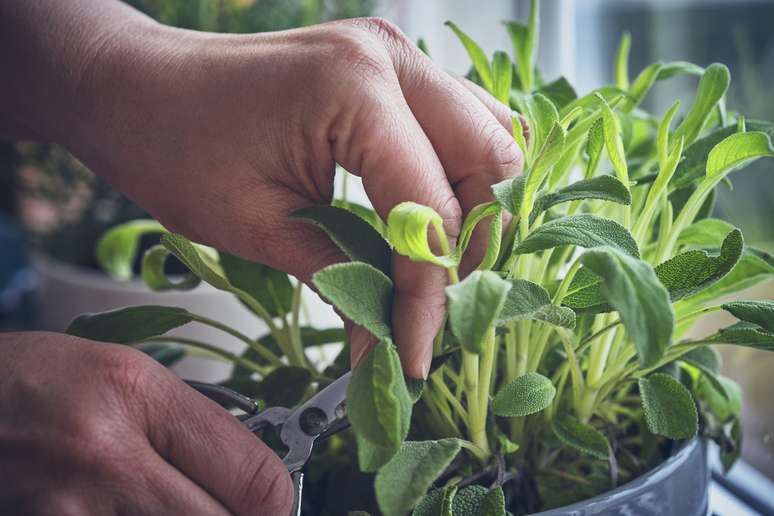The plant associated with medicine can transform the flavors of meat and vegetables
Sage has an intense aroma and a spicy flavor. Its long green leaves enhance fish, poultry and pork, as well as homemade sauces. In ancient Greece, sage was believed to prolong life and protect people. Because of its rough surface, it was associated with the skin of frogs: the animal was thought to live under the plant.
It was also believed to help expel evil spirits. In addition to its divine properties, sage also began to be used in medieval cuisine to season fatty meats, wine, beer and omelettes.
In modern cuisine, sage is little explored, but, interestingly, it is easy to handle. Since it is an “exotic” condiment, the chefs on duty believe that the plant pairs well with a few dishes, or simply with more complex and refined recipes.
Chef Fabiano Cunha, head of operations and menu at Dhomus, has come to demystify all things sage and teach you how to use it in your everyday cooking. Find out how to introduce this seasoning into your creations and transform the way you cook.
Which traditional dishes get a special twist with the inclusion of sage?
“Sage can be used both fresh and dehydrated. It is widely used in Mediterranean cuisine for its unique and refreshing flavor. It is present in recipes with meat such as pork, duck, chicken, as well as grains and vegetables that acquire a special touch.”
What are your tips for balancing the flavor of sage in culinary preparations?
“Sage has a powerful and slightly bitter flavor, with notes of mint and lemon that bring freshness. So every preparation must take these characteristics into account to obtain the desired flavor.”
What are the best practices when using sage for roasting and grilling?
“Being an aromatic herb, its freshness and unique flavor elevate the aromas. At Dhomus, for example, our dish Saltimbocca Romana with Gnocchi has sage wrapped in filet mignon and gnocchi.”
What are the best combinations between sage and vegetables in recipes?
“Sage goes well with a variety of vegetables. A perfect combination is sage in pumpkin puree.”
How to include sage in herbal teas and juices?
“Simply add a few leaves to hot or cold water and let them steep for a few minutes.”
How to choose the best sage leaves?
“The leaves should be bright green and never wilt, like other leaves that are still producing something at this stage.”
How to reserve sage correctly?
“Fresh sage can be stored in the refrigerator for up to a week, wrapped in a paper towel or perforated plastic bag.”
Source: Terra
Ben Stock is a lifestyle journalist and author at Gossipify. He writes about topics such as health, wellness, travel, food and home decor. He provides practical advice and inspiration to improve well-being, keeps readers up to date with latest lifestyle news and trends, known for his engaging writing style, in-depth analysis and unique perspectives.









